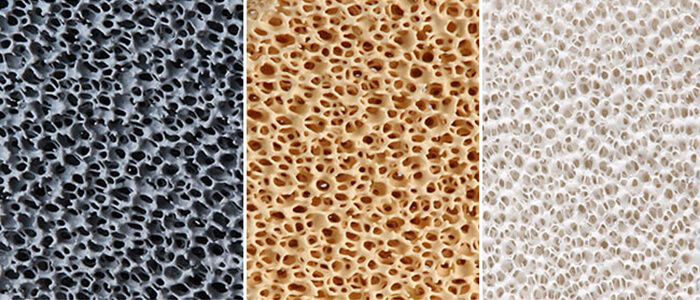The choice of foam filters for filtering molten metal is a critical decision that directly impacts the quality of castings produced. Understanding the nuances of foam filter selection and their applications in foundries is essential for achieving superior casting results. Let’s delve into the intricacies of foam filters used in foundries, exploring their types, functionalities, and optimal applications.
Types of Foam Filters:
Foam filters utilized in foundries predominantly consist of ceramic foam materials renowned for their exceptional heat resistance and filtration capabilities. These ceramic foam filters are available in various configurations tailored to specific casting requirements, ranging from coarse to very fine pore sizes. The selection of a foam filter is contingent upon factors such as the type of metal being cast, the casting method, and the desired surface finish.
Ceramic foam filters are available in various material compositions, each offering distinct temperature resistance properties tailored to specific casting requirements. Different material compositions include silicon carbide, alumina, and zirconia. The choice of ceramic foam filter material is crucial for withstanding the intense temperatures encountered during metal casting processes.
Applications of Ceramic Foam Filters:
The temperature resistance and material composition of ceramic foam filters play a crucial role in determining their suitability for specific casting applications. Matching the filter material to the melting point and reactivity of the metal being cast is essential for achieving optimal filtration efficiency and casting quality.
- Silicon Carbide Filters: Known for their excellent thermal shock resistance, silicon carbide filters are commonly used in high-temperature applications such as iron casting.
- Alumina Filters: Alumina filters are preferred for casting aluminum and other non-ferrous metals due to their superior resistance to molten aluminum and its alloys.
- Zirconia Filters: Zirconia filters are suitable for demanding casting processes involving reactive metals like titanium and superalloys due to their exceptional thermal stability.
Filter Thickness and Flow Rate:
The thickness of a foam filter plays a pivotal role in regulating the flow rate of molten metal during casting operations. Thicker filters offer heightened resistance to metal flow, potentially impeding the flow rate and causing a higher pressure drop. Conversely, thinner filters facilitate a more uniform metal flow, enhancing filtration efficiency and minimizing casting defects.
Optimizing Foam Filter Selection:
Selecting the appropriate foam filter involves a meticulous evaluation of casting requirements, metal type, and desired casting quality. Balancing filtration efficiency with optimal flow rates is crucial in achieving pristine castings with minimal defects. Customizing foam filter choices based on specific casting processes can yield enhanced results and elevate the overall quality of cast metal products.
Conclusion:
The utilization of foam filters in foundries is a cornerstone of the casting process, ensuring the production of high-quality castings free from impurities and defects. By discerningly selecting foam filters based on pore size, thickness, and application-specific needs, foundries can elevate their casting standards and deliver superior products to meet industry demands. Embracing the intricacies of foam filter technology is paramount for foundries striving to excel in precision casting and uphold unparalleled quality standards in their metal production endeavors.


